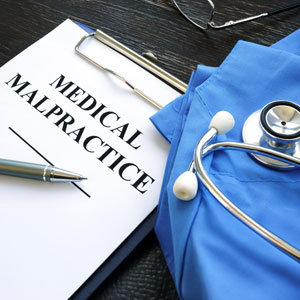Congress Voting On “Protecting Access To Care” Act of 2017
Medical MalpracticeCongress will soon be voting on the “Protecting Access To Care” Act of 2017 (House Bill 1215) in Washington, D.C. The bill is squarely aimed at reforming medical malpractice laws across the country. Iowa Representative, Steve King, sponsored the bill “to improve patient access to health care services and provide improved medical care by reducing the excessive burden the liability system places on the health care delivery system.”
So What Does The Protecting Access To Care Act Really Contain?
Shortened Statute Of Limitation
The first part of the bill seeks to “encourage speedy resolution of claims.” It does so by requiring claimants to bring their claims within a 1 year statute of limitation after you discover malpractice but no event more than 3 years after the date of the incident. This is shorter than Florida’s current 2 year statute of limitation with an extension to up to 4 years based upon a rule of discovery. Contrary to the title, this provision of the bill does not encourage speedy resolution of claims. Instead, it just requires the speedy filing of claims without any regard to how long it will take for the claims to ultimately resolve.
Caps On Damages
The next portion of the bill is titled “compensating patient injury” and functions as a cap on damages even though it is worded to sound like it actually provides something more for people injured by medical malpractice. This section provides:
- an unlimited amount of “economic damages”
- non-economic damages limited to $250,000 regardless of the number of parties or the number of claims brought
- no discount of future non-economic losses to present value
- “fair share rule” meaninng that each party only pays their percentage of liability
Each one of these issues will be discussed separately.
Florida law (and the laws of most, if not all, states) already allow a plaintiff in a medical malpractice case to collect unlimited “economic damages.” Therefore, this accomplishes absolutely nothing. Economic damages are things that you can clearly identify as a loss for purposes of damages (sometimes referred to as “special damages” because they are unique to the claimant). These damages include your medical bills, lost income from work, loss of earning capacity at future employment, purchase of medical equipment, modification of your home for medical reasons, and many more items that have a specific price tag.
With regard to “non-economic damages,” the bill is referring to pain and suffering, mental anguish, and loss of consortium. These are all damages that you cannot buy anywhere and that you cannot put a price tag on. While many of the damages in severe injury or death cases are in fact “priceless,” the law requires juries to place a value on those damages regardless. In a medical malpractice case, this is oftentimes one of the hardest things that a jury can be asked to do. Many states have already passed caps on non-economic damages only to reverse them as unconstitutional after appeals to the state supreme courts. This cap on pain and suffering, regardless of the type of case that you have, is perhaps the most unfair part of the bill.
In many states, the defendant in a medical malpractice case gets to reduce future damages to “present value.” The present value is the amount of money invested today that will produce the amount awarded in the future by taking into account things such as inflation. This provision of the bill is completely unnecessary because non-economic damages are already capped by the bill at $250,000 and, with interest rates and inflation as low as they are, there is essentially no benefit to disallowing a reduction to present value. This is another throw-away item in the bill.
Finally, the so-called “fair share” rule is merely the elimination of an old legal doctrine called “joint and several” liability. Florida has already abolished joint and several liability for torts and this is another throw-away item.
“Maximizing Patient Recovery” By Capping Attorney Fees
The bill also caps contingent attorney fees at:
- 40 percent of the first $50,000
- 23 and 1/3 percent of the next $50,000
- 25 percent of the next $500,000; and
- 15 percent of anything above $600,000
The purpose behind this provision of the bill, despite the moniker of “maximizing patient recovery” is actually to discourage claims further by limiting the financial incentive for plaintiff attorneys (such as myself) to bring medical malpractice cases for people. If plaintiff attorneys cannot make enough money to stay in business, then there won’t be any malpractice claims to pay out. Most contingency fee rates are 40 percent of the first $1 million and go down from there.
Many people do not realize the amount of time and effort that goes into bringing a medical malpractice case or the costs involved in obtaining medical opinions from qualified doctors. Medicine is a self-policing professional. This means that you cannot sue a doctor unless another doctor says that your outcome is the result of negligence. As with just about any self-policing entity, the members of the entity are generally reluctant to criticize one another (he who lives in a glass house shall throw the first stone) because they are all equally subject to liability. Therefore, it is a big deal when one doctor criticizes another for the care given to a patient.
Periodic Payments
This is where any gains are taken away. Under current Florida law, any award greater than $250,000 is subject to being paid by a defendant over periodic payments. This bill however, allows any judgment $50,000 or greater to be paid with periodic payments. Therefore, even if you get a million dollar judgment, the defendant may have 20 or more years to pay it and you may never live to collect it (although you have an estate that would collect after your death).
Prescription Drugs And Medical Devices
The last part of the bill is an absolute prohibition on suing doctors who have prescribed a medication that has been approved by the FDA (Food and Drug Administration) or an approved medical device in any class action or other lawsuit against the manufacturer of the product. Many medical malpractice claims go hand in hand with a product liability claim. For instance, the manufacturer of a medical device may be responsible for a medical injury because the device requires very specific training on how and when it should be used by doctors. As such, there are medical malpractice cases that involve a degree of physician liability (for improper use or bad technique) and a degree of product liability (for a product that should be designed differently, come with adequate training or warnings, or should only be used under certain circumstances).
Contact A Lakeland Medical Malpractice Attorney For Help With Your Case
If you have been injured as a result of medical malpractice, you should contact a Lakeland medical malpractice attorney to discuss whether you have a case. A medical malpractice attorney can help sort through the maze of laws and science involved in whether you have a legally viable case.
We certainly hope that this bill does not pass and become law. Please see other sources for further discussion of this topic below:


